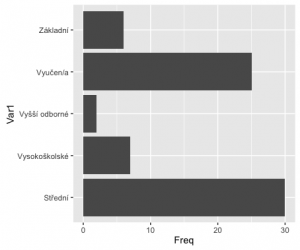- dhcp server
- NFS server, preferably NFSv4
- rpi 4 with raspbian (buster)
DHCP server settings
We need to add code 66 to DHCP options. I’m using mikrotik, so I’ve added one DHCP option
- name: ‘tftp-server-name’
- code: 66
- value: s’192.168.1.100′
please note the value with preceding ‘s’, it’s required. Then add one dhcp option group, add this option and add this option group to certain dhcp lease
NFS server configuration
Configure your server with privileges from given IPs, sys, async. You’ll need one mountpoint (or if you need more security, you can define one per host), like /pxe with rw privileges, limited to given IP(s). My directory structure looks like
- pxe
- tftp-server
- [serial]
- rpis
- [serial]
Whereas tftp-server/[serial] contains boot code for certain IP, and rpis/[serial] is root.
To obtain serial, use this code.
vcgencmd otp_dump | grep 28: | sed s/.*://g
TFTP server
To obtain boot from network, you need one TFTP server. Ideally, use one of mountpoints. Root of your TFTP must be set to /pxe/tftp-server
Preparing eeprom to PXE boot
You need to do following steps – update apt and upgrade to the lastest, and install latest rpi-eeprom package
apt update apt full-upgrade apt install rpi-eeprom
Then copy latest .bin to the new one and extract parameters
cp /lib/firmware/raspberrypi/bootloader/stable/pieeprom-[find latest].bin pieeprom.bin rpi-eeprom-config pieeprom.bin > bootconf.txt vim bootconf.txt
and edit bootconf.txt like this
[all] BOOT_UART=0 WAKE_ON_GPIO=1 POWER_OFF_ON_HALT=0 DHCP_TIMEOUT=45000 DHCP_REQ_TIMEOUT=4000 TFTP_FILE_TIMEOUT=30000 TFTP_IP= TFTP_PREFIX=0 BOOT_ORDER=0x21 SD_BOOT_MAX_RETRIES=3 NET_BOOT_MAX_RETRIES=5 [none] FREEZE_VERSION=0
The most important part is BOOT_ORDER. 0x21 tells to try sd card, then network boot. Now to update eeprom.
rpi-eeprom-config --out pieeprom-new.bin --config bootconf.txt pieeprom.bin rpi-eeprom-update -d -f ./pieeprom-new.bin reboot
Filesystem preparation
as there’s no swap possible, remove dphys-swap
apt remove -y --purge dphys-swapfile rm /var/swap
We need to disable resize2fs if enabled
systemctl disable resize2fs_once
Now we need to copy our /boot into /pxe/tftp-server/[serial]. So prepare mount and do the copy
mkdir -p /mnt/pxe mount 192.168.1.100:/pxe /mnt/pxe -t nfs -o proto=tcp,vers=4.2,port=2049 export serial=[serial from above] copy -r /boot /mnt/pxe/tftp-server/$serial/
And now to copy root filesystem to NFS
rsync -xa --progress --exclude /mnt/pxe / /mnt/pxe/rpis/$serial/
Once the copy is done, edit fstab in the copy (in /mnt/pxe/rpis/$serial/etc/fstab) and remove all entries for / and replace /boot mountpoint. fstab should then look like this
proc /proc proc defaults 0 0 192.168.1.100:/pxe/tftp-server/[serial] /boot nfs defaults,proto=tcp,port=2049,vers=4.2 0 0
Now it’s time to modify cmdline.txt in boot /mnt/pxe/tftp-server/[serial] directory, to specify root mountpoint
console=tty1 root=/dev/nfs nfsroot=192.168.1.100:/pxe/rpis/[serial],proto=tcp,port=2049,vers=4.2 rw ip=dhcp rootwait elevator=deadline
It must be one oneliner only.
Now it’s time to shutdown your rpi, remove SD card and let it boot from the network. Enjoy!





